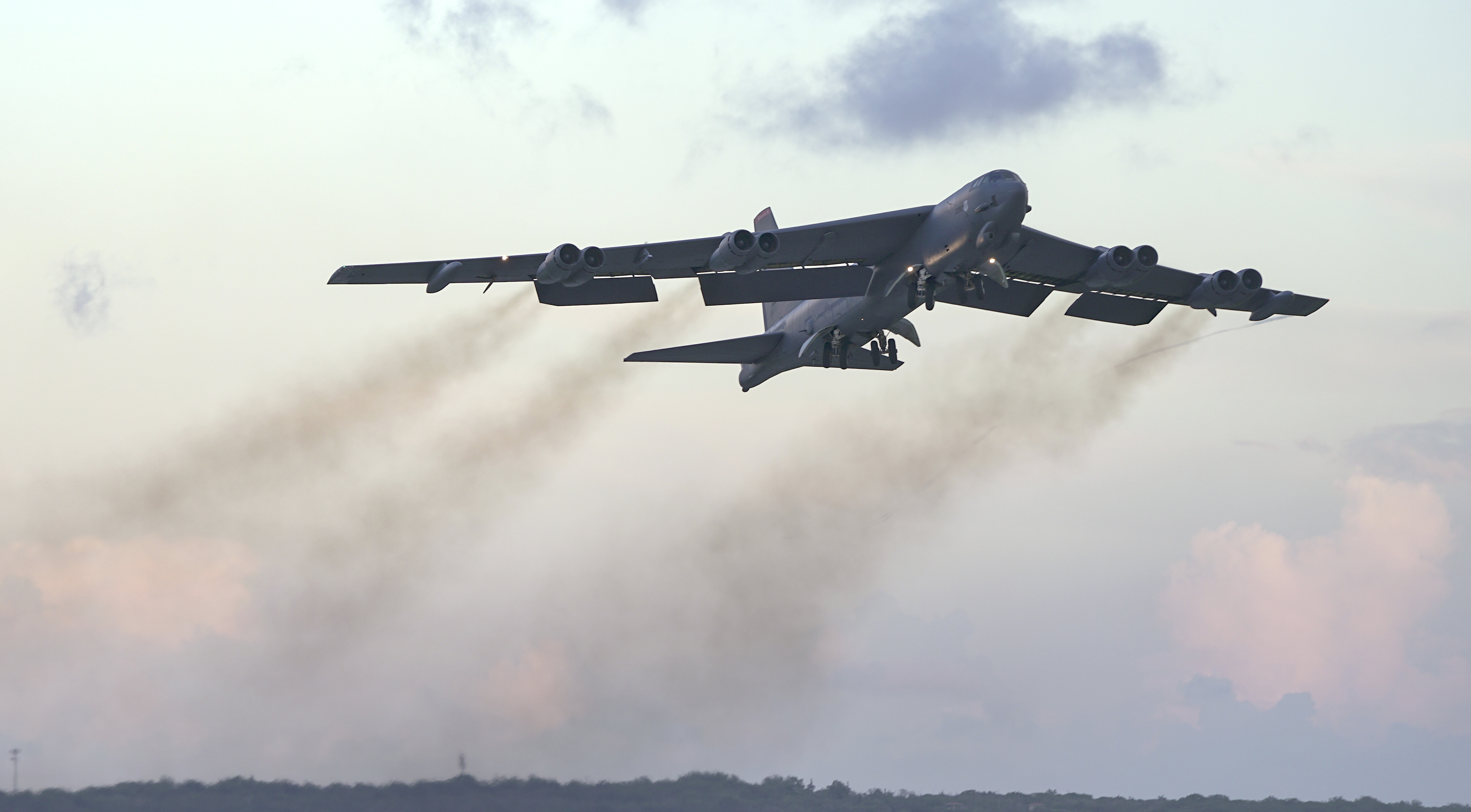
A B-52H bomber assigned to the 20th Expeditionary Bomb Squadron, deployed from Barksdale Air Force Base, La., takes off from Andersen AFB, Guam, in June. Air Force photo by MSgt. Richard P. Ebensberger.
GE Aviation plans to offer two engines in the Air Force’s B-52 re-engining program, which is finally gaining steam after decades of debate.
Speaking to reporters at the Farnborough International Air Show in England last week, company CEO David Joyce said GE is confident that both the CF34-10 and the more advanced Passport engine are “good candidates” for the program.
Joyce said the Dash-10, which flies on the Embraer 190, is proven technology, with 7,000 departures every day. It’s not only “incredibly reliable,” but also the “perfect thrust size” for the B-52, he added. However, if the service prioritizes fuel efficiency, Joyce said GE can offer the Passport, which will allow for about 14,000 hours time on wing.
“This is one of my favorite stats. If they pick the Dash-10, they get sustainability right now. That engine is performing on wing with the Embraer 190, 20,000 hours … between overhauls. If you take the 20,000 hours time on wing and put it on a B-52, the airplane might go 50 years without having to remove an engine because of deterioration,” said Joyce, emphasizing the significant cost savings that come with a commercially available motor “that’s demonstrated that level of maintainability and reliability.”
But the Passport, he says, could be equally attractive, because it would decrease the fuel burn by double digits, creating a “whole different mission profile.”
Tony Mathis, president and CEO of GE’s military systems operation, said he was encouraged by discussions at the December 2017 industry day, saying it appears the Air Force is trying to speed up the program through a rapid acquisition process. The budget also “seems fairly solid,” he noted.
In its Fiscal 2019 budget request, USAF called for $280 million to update its B-52H fleet, more than doubling the 2018 request of $106 million. Of that, $64.5 million will be used to begin the re-engining program. The service now plans to keep the bomber in service through the 2050s,
The fact that Boeing already has been selected as the systems integrator, “is another indicator the program is going to move and it gave us another indication of who to work with moving forward,” said Mathis.
“They really are looking at how to get through the program as quickly as possible,” he added.
Pratt & Whitney and Rolls Royce also attended the industry day, as did Northrop Grumman, United Technologies Corp., and Safran USA.